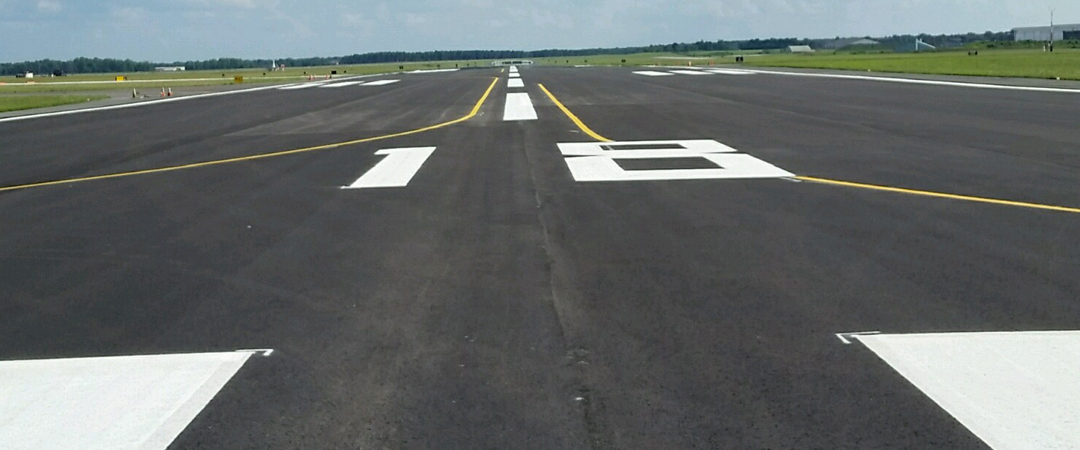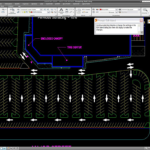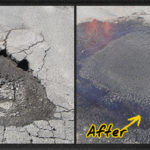Airport Pavement Maintenance & Striping
 Airport Pavement Maintenance & Striping
Airport Pavement Maintenance & Striping
Airport pavement has different specification with the general highway pavement. The structural design and evaluation of airfield pavements can involve wheel loads up to 28 tons and arrange in various multiple configurations. Surface serviceability requirements can necessitate special considerations in respect of material specifications, construction, and maintenance of airfield pavements. This includes the need for high friction levels to facilitate effective and efficient braking and steering of aircraft at high speeds and in wet conditions. Aircraft are also susceptible to damage from loose materials on a pavement surface.
These potential sources of damage are generally referred to as an FOD (Foreign Object Damage) hazard. Safeguarding against the FOD risk, therefore, necessitates airfield pavements having high surface integrity. A further complicating factor is the difficulty of gaining access to carry out maintenance on airfield pavements especially on a runway. Other special design requirements can include resistance to fuel spillage, de-icing chemicals, and jet blast. The design and serviceability requirements together with the potentially serious consequences of failure necessitate a separate approach to the design, construction, and maintenance of airfield pavements.
Like roads, airports have taxiways which take us to and from the runway. Along those roads, or taxiways, exist a variety of markings and signs provide guidance to pilots operating on the airport surface during arrival and departure. These airport markings and signs, both in the United States and internationally, are standardized by the International Civil Aviation Organization (ICAO) to enhance safety and improve efficiency.
The markings on runways are white. Markings defining the landing area on a heliport are also white except for hospital heliports which use a red “H” on a white cross. Markings for taxiways, areas not intended for use by aircraft (closed and hazardous areas), and holding positions (even if they are on a runway) are yellow.
The Maintenance of Airport
The maintenance of airport pavement (including its striping or marking) is required special attention. Maintenance includes preventive and any regular or recurring work necessary to preserve existing airport pavements in good condition. Replacing individual parts and mending portions of a pavement are considered minor repair. Typical preventive and regular or recurring pavement maintenance includes routine cleaning, filling, and/or sealing of cracks; patching pavement; seal coating; grading pavement edges; maintaining pavement drainage systems, and restoring pavement markings. Timely maintenance and repair of pavements are essential in maintaining adequate load-carrying capacity, good ride quality necessary for the safe operation of aircraft, good friction characteristics under all weather conditions, and minimizing the potential for foreign object debris (FOD).
Some older pavements were not designed for today’s aircraft fleet and are exposed to much greater loads than those initially considered. Federal Aviation Administration (FAA) airport pavement design is based on a minimum 20-year structural life, with the understanding that regular, routine maintenance is performed. Without regular maintenance, the pavement may not achieve the intended structural life.
Airport pavements require continual routine maintenance, rehabilitation, and upgrading. Immediately after completion, airport pavements begin a gradual deterioration attributable to weather and loading. Normal distress in the pavement structure due to weathering, fatigue effects, and differential movement in the underlying subbase occur over a period of years. This gradual deterioration is accelerated by, among other things, faulty construction techniques, substandard materials, or poor workmanship. Traffic loads in excess of those forecast during pavement design may also contribute to shortened pavement life.
The most effective means of preserving airport runways, taxiways, aprons, and other pavement areas is to implement a comprehensive maintenance program. Airfield pavement markings are important because, in the airfield maintenance industry, few things are of a higher importance than safe and visible markings. Runway incursions, unlike many other vehicular accidents, can turn catastrophic to large quantities of people and property in a very short time if proper precautions are not taken.
Contact us
 Phone Call |
 Text Message |
 |







